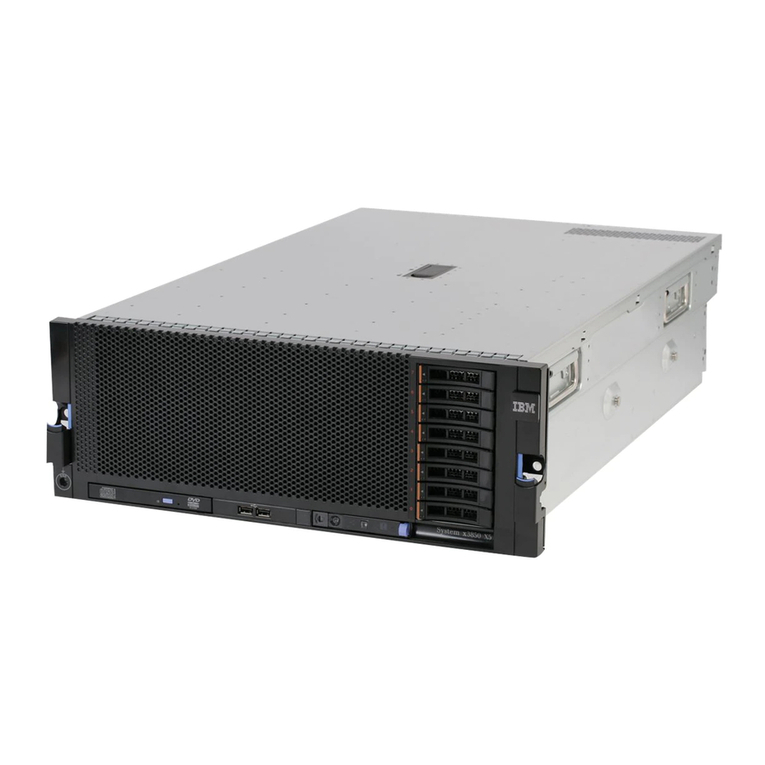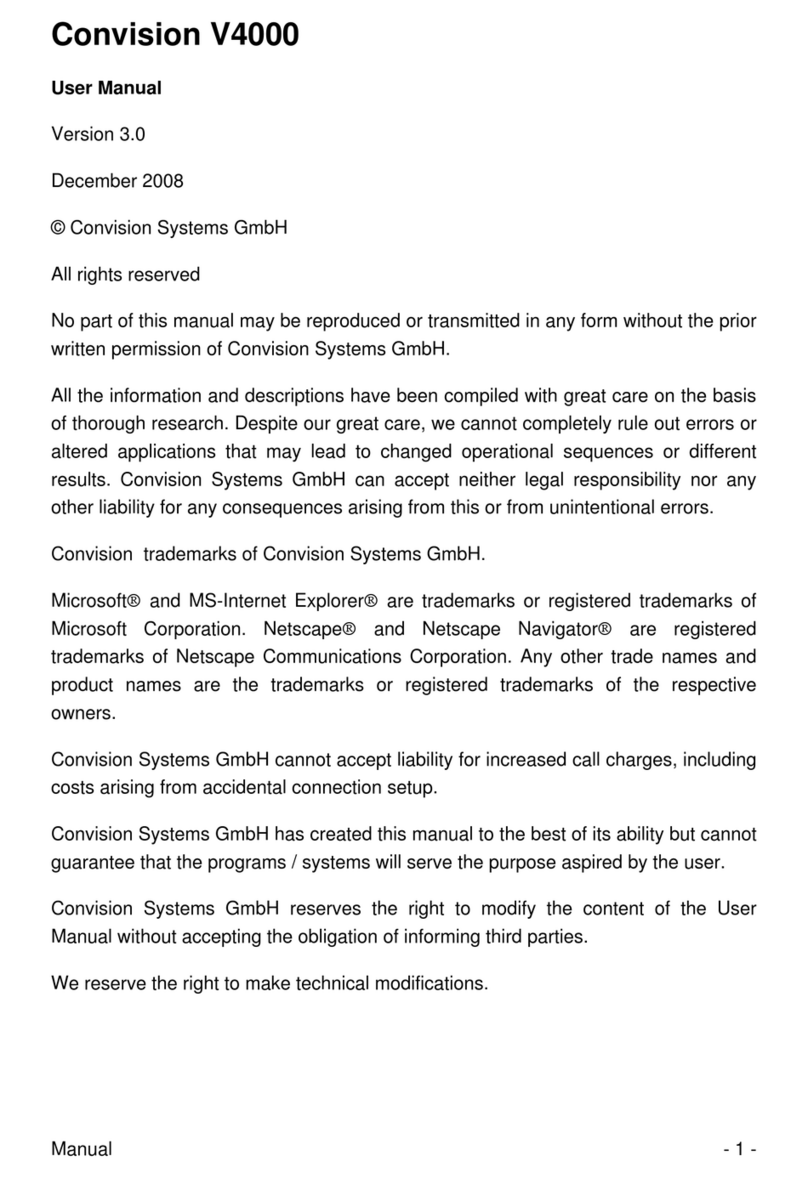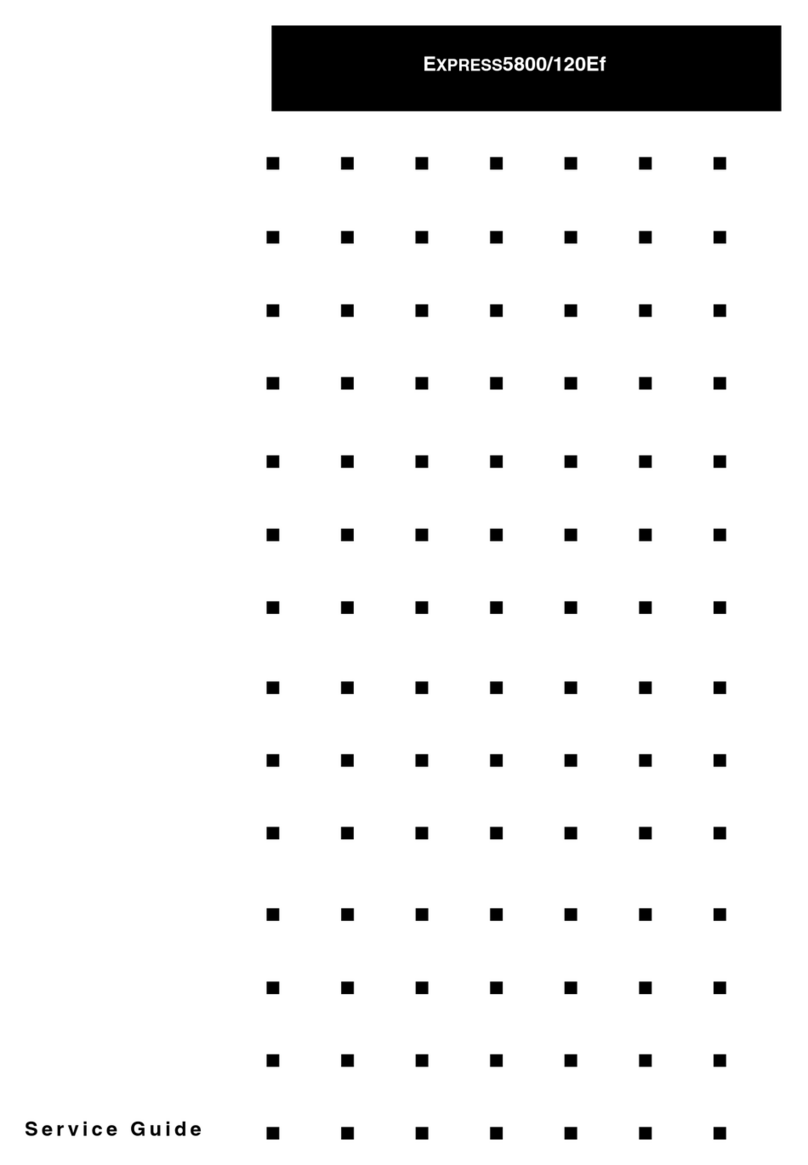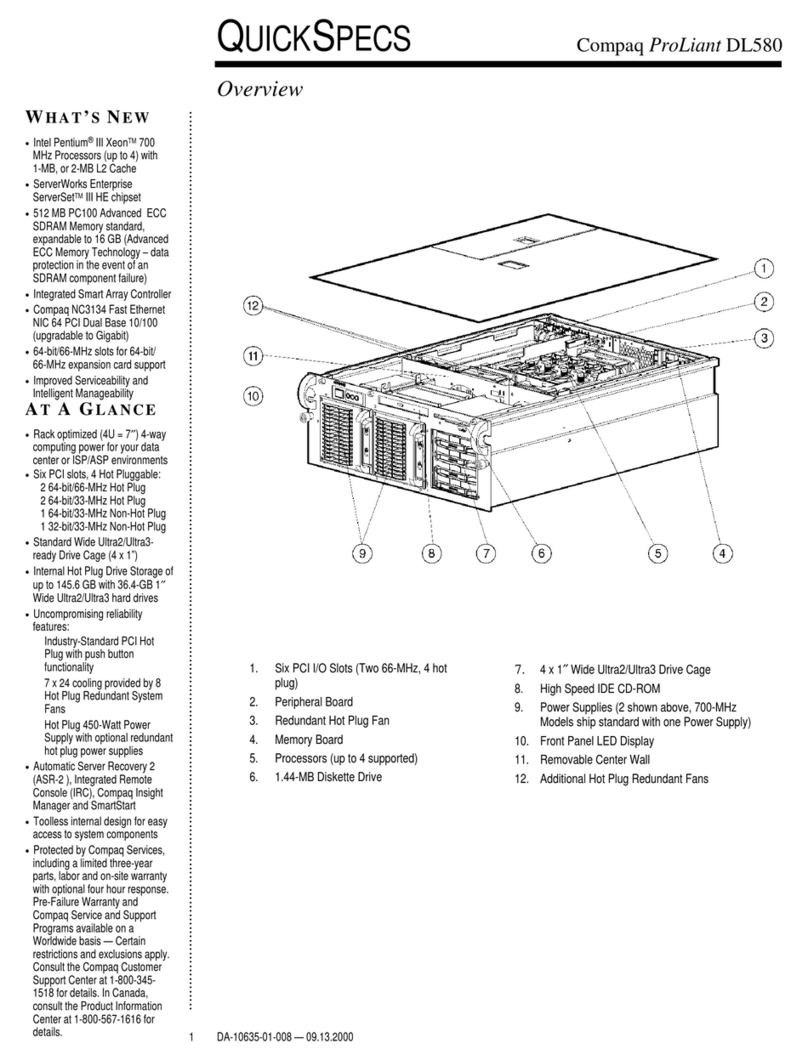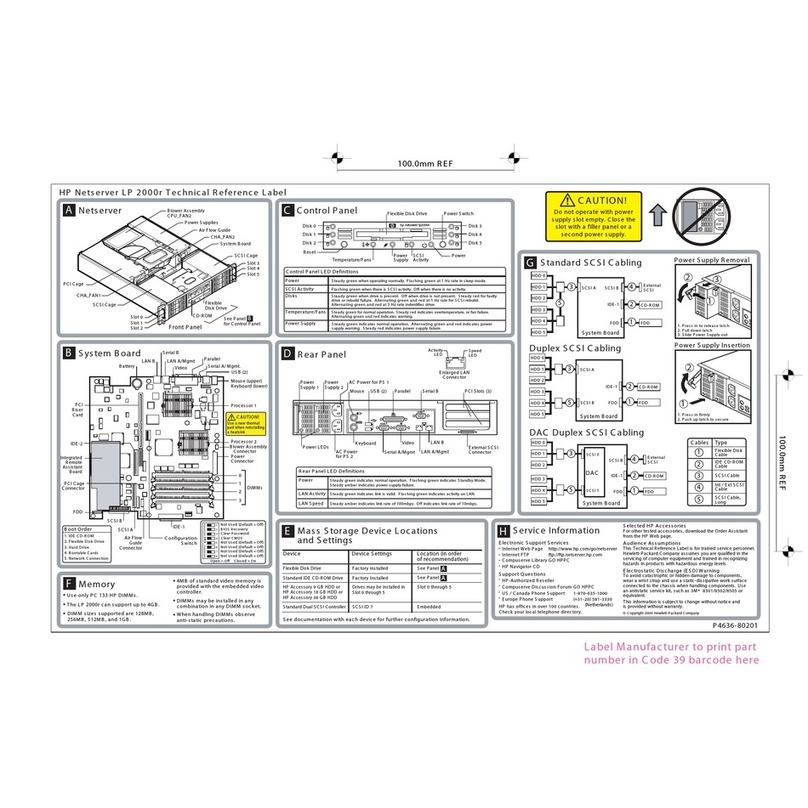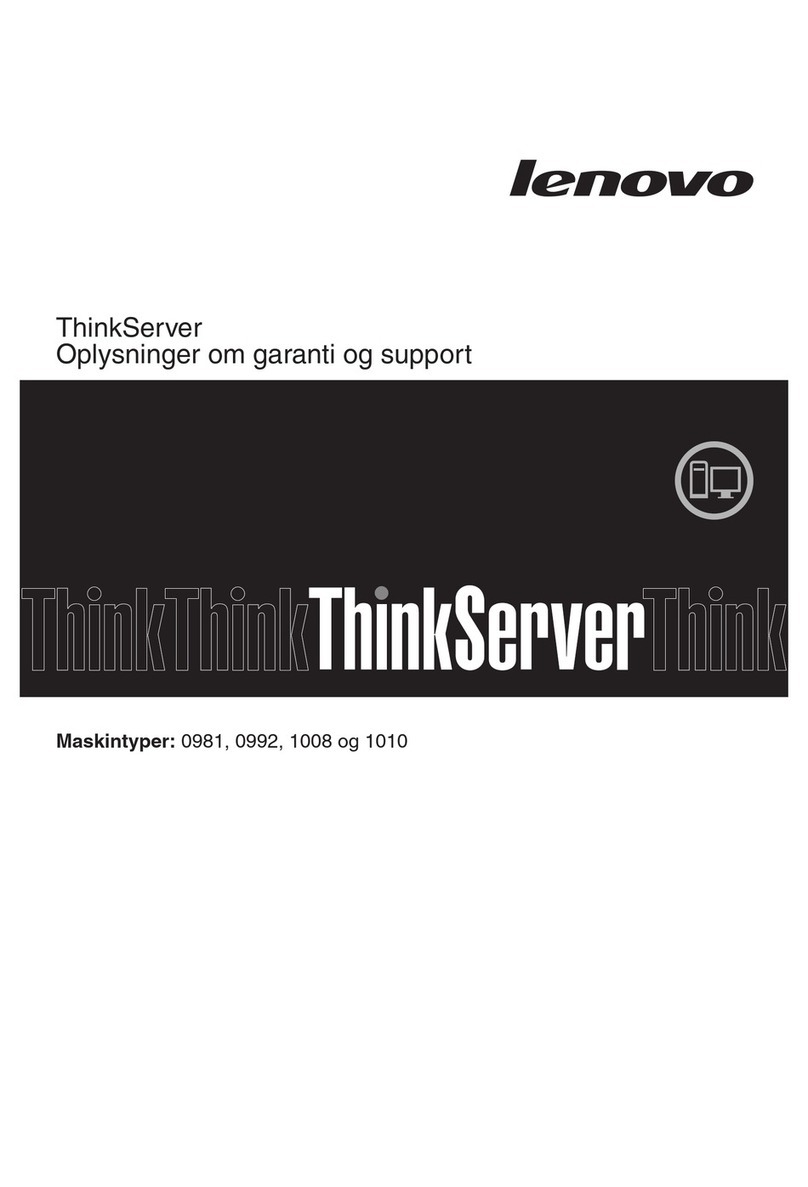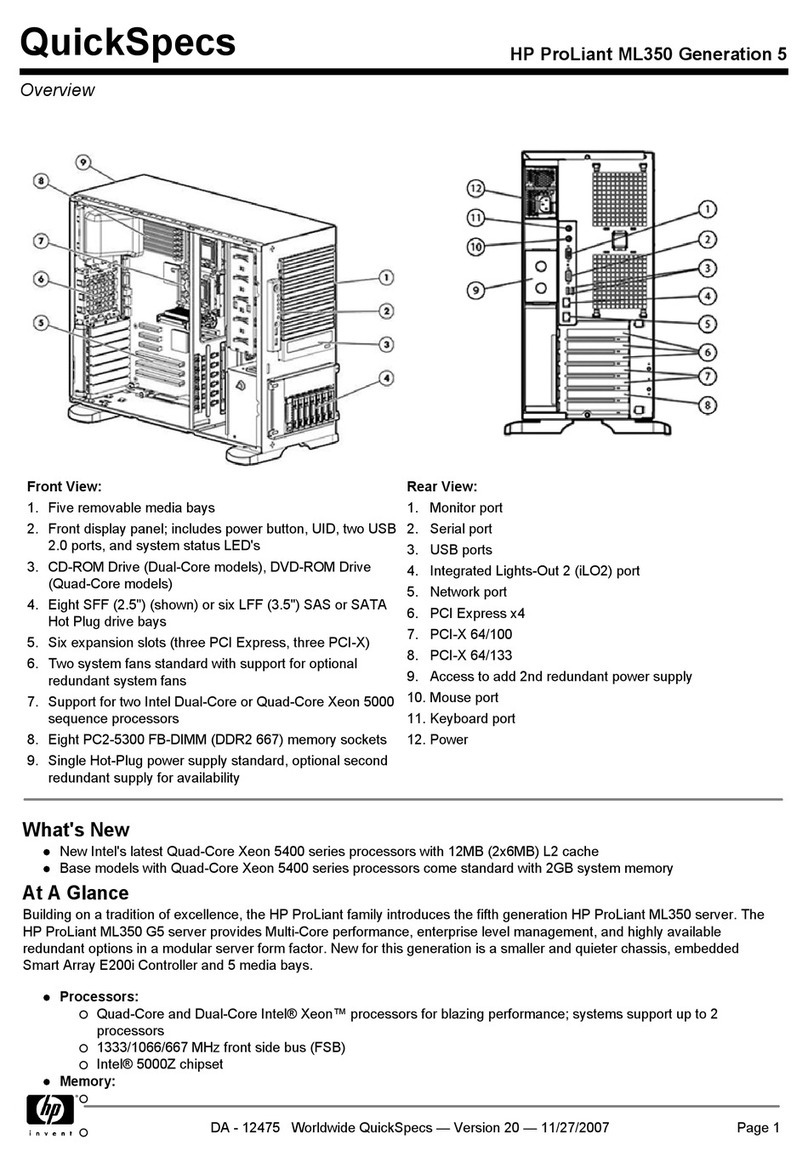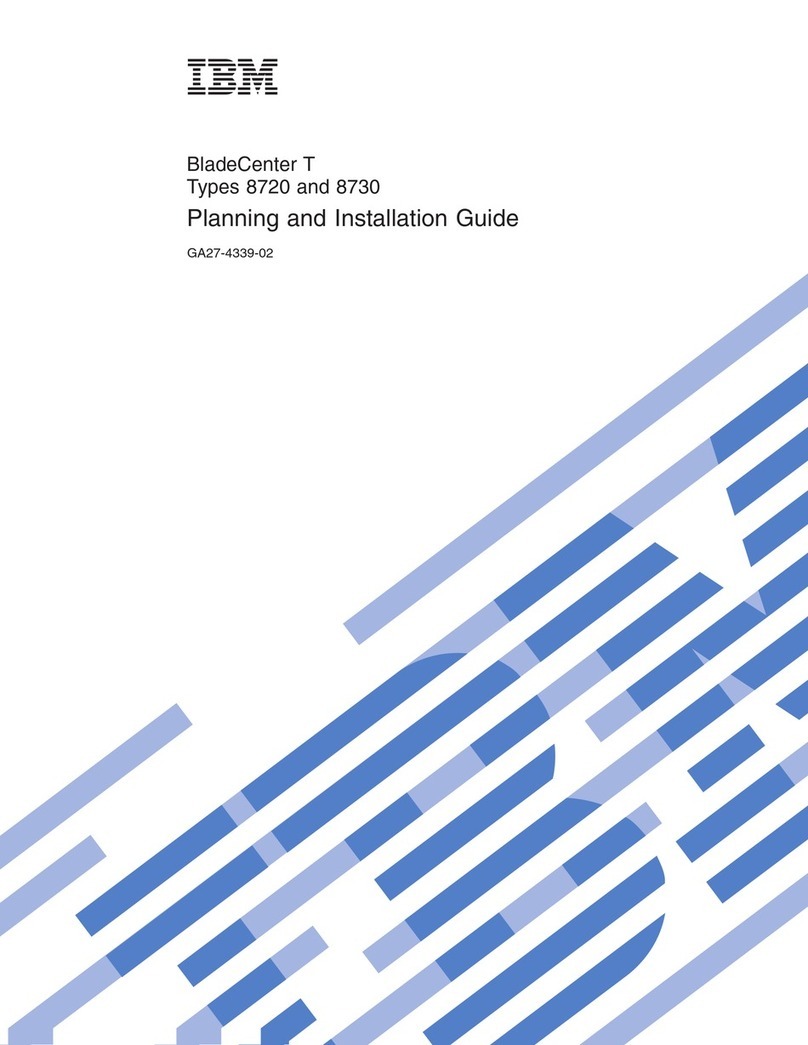Clepsydra NTS-3000 User manual

!
1!
!
USER MANUAL
!
NTP/PTP Network Time Servers
NTS-3000
NTS-4000
NTS-5000 w/ 4x PTP/IEEE1588
multi LAN HYDRA-Extender
Updated: September 2017

!
2!
!
SAFETY INSTUCTIONS! 3!
TRADEMARKS, ACKNOWLEGMENT & CONTACTS! 3!
QUICK!MANUAL! 5!
1.!QUICK!INFO!–!ABOUT!PRODUCT! 6!
2.!QUICK!INFO!–!PRODUCT!AT!ARRIVAL! 7!
3.!QUICK!INFO!–!MOUNTING!AND!CONNECTING! 8!
4.!QUICK!INFO!–!POWERING!ON! 9!
5.!QUICK!INFO!–!PANEL!KEYBOARD!SETUP!12!
6.!QUICK!INFO!-!LCD!MESSAGES!14!
7.!QUICK!INFO!–!TROUBLESHOOTING!WITH!SSH!15!
8.!QUICK!INFO!–!UPDATING!FIRMWARE!17!
9.!MAIN!MANUAL!18!
10.!PRODUCT PERFORMANCE!19!
11.!PRODUCT ASSURANCE REQUIREMENTS!26!
12.!NTS-X000 FIRMWARE EVOLUTION!28!
13.!GLOSSARY TIME TERMS!29!
14.!OVERVIEW!31!
15.!HARDWARE!32!
16.!EXTRA!FEATURES!36!
17.!HIGH!PRECISION![NS]!4XPTP!ITU-I!G.8261!38!
18.!HYDRA!MODULAR!MULTI-LAN!EXTENSION!39!
19.!UTC,!LEAP!SECOND!AND!TIME!MULTISOURCE!41!
.!!!!!!!!!!UTC!41!
.!!!!!!!!!!GPS!TIME!(GPST)!41!
.!!!!!!!!!!GLONASS!TIME!(GLONASST)!42!
.!!!!!!!!!!GALILEO!TIME!(GST)!42!
.!!!!!!!!!!BEIDOU!TIME!(BDT)!42!
.!!!!!!!!!!LEAP!SECOND!43!
20.!GNSS!RECEIVER!&!ANTENNA!49!
21.!NTS-PROTECT!(EXTRA!SURGE!PROTECTION)!56!
22.!FO-CONVERTER!(FIBER!OPTIC!CONVERTER)!61!
23.!ROBUST!SYNC!-!APPLICATION!NOTES!64!
24.!POWERING!UP!66!
25.!LCD!MESSAGES!67!
26.!KEYBOARD!SETUP!68!
27.!RESTORING!FACTORY!DEFAULTS!69!
28.!UTC!MULTISOURCE!INPUTS!OF!NTS!70!
29.!MAINTAINING!HOLDOVER!MODE!(NTS-5000)!71!
30.!SOFTWARE!SETUP!FOR!STD.!LAN1-LAN2!73!
31.!PTPV2!SETUP!OF!PTP1-LAN4!(LAN3-LAN6)!81!
32.!APPLICATION!NOTES!FOR!HFT!&!MIFID!II!100!
33.!SOFTWARE!SETUP!VIA!WWW!(HTTP/HTTPS)!103!
34.!NTP!SYMMETRIC!AUTHENTICATION!(MD5)!113!
35.!SYSLOG!121!
!

!
3!
SAFETY INSTUCTIONS
ATTANTION!
These are the important Safety Instructions that should be followed during
installation and maintenance of the Elproma NTS-3000/4000/5000 timeserver family
product.
IMPORTANT NOTE
This equipment contains hazardous AC and DC voltages. Do not handle any metallic
part until the power has been disconnected. Do not assemble, disassemble set when
the power is ON. Making wiring and touching cables is strongly prohibited when
power is ON. Please refer to your RACK’19 safety instruction to learn more about
connecting power to equipment. The NTS-protection system requires PE line to be
connected into RACK’19 din rails.
Elproma safety advises:
1. Safety first! Never work alone under hazardous voltage conditions
2. High short circuit current trough conductive materials can cause server burns
3. Check that the power cord(s), plug(s), and sockets are in good conditions
4. Always use qualified service personnel to install permanently wired equipment
5. Do not handle any metallic part before the power has been disconnected
6. Take care your power lines and rack’19 frame is properly PE grounded
TRADEMARKS, ACKNOWLEGMENT &
CONTACTS
© CLEPSYDRA is trademark of Elproma Elektronika Sp. z o.o.
© ELPROMA is trademark of Elproma Electronics BV
& Elproma Elektronika Sp.z o.o.
© TELEORIGIN is trademark of Elproma Elektronika Sp. z o.o.
ELPROMA Electronics Poland Sp. z o.o.
Szymanowskiego Str. 13 PL05092 Lomianki/Warsaw POLAND (EU)
Phone: +48 227517680
Fax: +48 227517681
Internet: http://www.clepsydratime.com
E-mail: [email protected]

!
4!
Acronyms
1PPS!
1!Pulse!Per!Second!
ITU!
International!Telecom!Union!
AIV!
Assembly,!Integration!and!Validation!!
KPI!
Key!Performance!Indicator!
BIPM!
Bureau!International!des!Poids!et!
Mesures!
MCT!
Modular!Coherent!Transfer!
CA!
Certificate!Authority!!
NMI!
National!Metrological!Institutes!
CCTF!
Consultative!Committee!for!Time!and!
Frequency!
NTA!
National!Time!Authority!
(mostly!the!same!as!NMI)!
CIF!
Core!Infrastructure!Facilities!!
NTP!
Network!Time!Protocol!
COTS!
Commercial!Off-the-Shelf!!
OFT!
Optical!Fibber!Technology!
CV!
Common!View!
OSC!
Oscillators!(OCXO,!Rubidium,!Cs)!
DAB!
Digital!Audio!Broadcasting!
PPP!
Point!Precise!Positioning!
DEMETRA!
Demonstrator!for!EGNSS!services!
based!on!Time!Reference!Architecture!
PTP!
PTPv2!
Precise!Time!Protocol!IEEE!1588!
(WR!–White!Rabbit!profile!of!PTP)!
DB!
Database!(mostly!SQL)!
QR!
Quality!Report!
DVB!
Digital!Video!Broadcasting!
RINEX!
Receiver!Independent!Exchange!
Format!
ETH!
Ethernet!
RMO!!
Regional!Metrological!
Organization!
EBU!
European!Broadcast!Union!
SFN!
Single!Frequency!Network!
EGNOS!
European!geostationary!navigation!
overlay!system!
SIS!
Signal!In!Space!
EGNSS!
European!GNSS!
SPF!
Service!Provision!Facility!
EURAMET!
European!Regional!Metrological!
Organisation!!
SV!
SVN!
Satellite!Vehicle!
Satellite!Vehicle!Number!
EWR!
Extended!White!Rabbit!
SVF!
Service!Validation!Facility!!
FO!
Fibber!Optic!
SW!
Software!
FR!
FREE-RUN!mode!!
T&F!
Time!and(&)!Frequency!
GCC!
Galileo!Control!Centre!
TAI!
International!Atomic!Time!!
FTP!
File!Transfer!Protocol!
TA(PL)!
Polish!Atomic!Time!
GDO!
GPS!Disciplined!Oscillator!
TDMA!
Time!Division!Multiple!Access!
GGTO!
Galileo!GPS!Time!Offset!
TFL!
Time!and!Frequency!Laboratory!
GMT!
Greenwich!Mean!Time!
TLC!
Time!Local!Clock!!!!!(the!same!as!
UT)!
GNSS!
Global!Navigation!Satellite!System!
TMC!
Time!Master!Clock!(see!TSG)!
GPS!
Global!Positioning!System!
TRF!
Time!Reference!Facility!(see!TMC)!
GPST!
GPS!Time!Scale!
TSA!
Time!Stamping!Authority!
GSA!
GNSS!Supervising!Authority!
TSI!
Time!Service!Infrastructures!
GST!
Galileo!System!Time!
TWSTF!
Two!Way!Satellite!Time!and!
Frequency!Transfer!
HTTP!
HTTPS!
Hypertext!Transfer!Protocol!!!
Hypertext!Transfer!Protocol!Secure!!!!
UT!
User!Terminal!(see!also!TLC)!
HO!
HOLDOVER!mode!!
UTC!
Universal!Time!Coordinated!
HW!
Hardware!
WP!
Work!Package!
IPR!
Intellectual!Property!Rights!
WR!
White!Rabbit!(see!PTP)!
IRIG-B!
Time!Code!(AM!or!DM)!!
WPL!
Work!Package!Leader!

!
5!
QUICK!MANUAL!!
!
Configure
In 5 Minutes

!
6!
1. QUICK!INFO!–!About!product
NTS-x000 covers following ELPROMA time server models: NTS-3000, NTS-4000, NTS-5000. These
are all STRATUM-1 NTP time servers. They optionally support other standards too, incl.
PTP/IEEE1588, IRIG, IBM SYSPLEX etc. The main difference between specific models is built-in
oscillator (OSC). It serves time & frequency even when NTS-x000 cannot receive GNSS signals. This
is called HOLDOVER mode (HO). NTS-x000 operating in HO mode reminds STRATUM-1. However,
to operate HO server OSC must be synchronized to GNSS first, and this means NTS-x000 must get
synchronized to GNSS first too. Unsynchronized OSC works in FREE-RUN (FR) mode and server
claim then STRATUM-6. Server NTS-5000 optionally supports low level hardware PHY timestamping.
It can be equipped with 1-4 high accuracy (PDV) PTP/IEEE1588 cards offering nanoseconds [ns].
Servers supports simultaneously several UTC ref. sources of time from 3 independent groups:
#Group: Ref. TIME:
1) GNSS satellite systems GPS, GLONASS, GALIELO, BEIDOU
2) Remote TIME SERVERS NTP, PTP/IEEE1588:2008, IBM SYSPLEX, IRIG-B
3) Local ATOMIC clocks 1PPS, 10MHz, RS-232, RS-485, IRIG-B, LAN/VLAN/WAN
NTS-x000 (NTS-3000, NTS-4000, NTS-5000) can simultaneously use multiple REF. TIME
ELPROMA Time Server computes weighted average time from its all trusted TIME ref. sources.

!
7!
2. QUICK!INFO!–!Product!at!arrival
Standard product pack includes on arrival inside box:
1.
Network Time Server NTP/PTP
NTS-3000, 4000 or 5000 model
1pcs.
2.
Intelligent GNSS Receiver
w/ build in Antenna
1pcs.
3.
Roof Mounting Kit (H=05m)
(incl. screws, handlers etc.)
1set.
4.
CD with software
Incl. PDF manual
1pcs.
or
5.
Ethernet patchcord
UTP cat. 5 (2m)
2pcs.
6.
110-230VAC Power cable 1.5m
1pcs.
Shipment can include extra parts (product extra options):
a.
2nd Redundant GNSS Receiver
(see p.2 in table above)
extra 1pcs.
+
b.
Mounting accessories
(if option a. delivered)
extra 1set.
Please ref. to p.3 above
c.
NTS-protect
surge/overvoltage for:
GNSS, 110-230 PwR, ETH 1&2
1set.
d.
NTS-FO
(converter electric-2-fibber)
e.g. to connect GNSS
2pcs.
(1set)
Important Note!
Antenna cable is not included. Standard UTP cat 5 (or above) is recommended min. - best if
external env. use. You can connect GNSS receiver on max. distance of 0.7km from server, and
without amplifying signal. However, it is much better to choose STP (shielded) cat. 6 cables. It much
more resistant for EMC interferences. Using STP a max. connection distance is also doubled (1.4km).
PTP/IEEE1588 1GE Ethernet 1-4 modules are always arriving build-in to NTS-5000 (if option ordered)

!
8!
3. QUICK!INFO!–!Mounting!and!connecting!
Quick unpacking/mounting steps:
1. Remove all parts from shipped BOX.
Prepare additional tools: RJ45
connectors (pcs.2), UTC or STP cat.5
(not included to shipment), Ethernet
crimping tool, screwdriver, scissors etc.
2. Mount GNSS receiver on the top point of
roof of a building. It should access
possible a 360o sky view to receive max.
available satellite vehicles (SVN). Do not
mount GNSS receiver nearby: wall,
chimney, electric engines, fans and air-
conditions. The min. recommended
distance to keep between other: GNSS,
TELECOM transmitters at least 2 meters!
3. Lunch UTP (STP) cables down to server
room. Cables should not be located in
direct neighborhood of other power lines.
Try play gently with cables (do not cut
cables, nor break cable). Well done cable
installation should be tested for
connectivity and resistance before using.
4. (optionally) Mount NTS-surge protection
on the back of rack’19 shell. Ensure, it is
properly grounded to PE lines. Ask,
certified authority to assist you, if you are
not qualified for electric installations.
Read all safety instructions first.
5. Crimp RJ45 connectors to terminate
antenna cables. Test connection again.
6. Locate Time Server in rack”19 shell.
Please keep min. 1U space to
neighborhood product that can
unexpectedly hit your NTS-x000.
7. Connect all POWER lines 110-230VA.
8. Switch POWER-ON. Observe server’s
LCD and 6x LED during BOOT, and
GNSS synchronization.
9. Setup basic LAN configuration from front
panel KEYBOARD.
10. Prepare PC for SSH/www advance setup
via interface LAN1 or LAN2.
Rack”19 shell with 3x NTS-5000
(Installation example)

!
9!
4. QUICK!INFO!–!Powering!ON!!
If both, GNSS antenna and the PWR lines have been connected to NTS-x000, unit is ready to use.
You can TURN-ON a power switch located on the back panel of NTS-x000 server. In case of
redundant power lines (A/B), each power supply should be SWITCH-ON separately in random order.
The YELLO LED starts pulse (PPS) max. 1 minute after switching power-ON. This is typical firmware
start-up time duration. takes 1 minute. BOOT progress and each phase of starting process can be
traced on front panel 6x LED (left side) and LCD display located on right side of front panel.
Following boot sequence presents start-up phases of NTS-x000 (NTS-3000, NTS-4000, NTS-5000):
#
Process
Time
duration
6x LED
(Front Panel - left)
LCD display
(Front Panel right side)
ANT1/ANT2
(Back Panel)
1
OFF-ON
1s
Yellow LED is OFF
2
HW
INIT
1s
Yellow LED is OFF
3
SW
INIT
1s
Yellow LED is OFF
(C) 2016 ELPROMA
www.ntp-servers.com
(C) 2016 ELPROMA
www.ntp-servers.com
Boot Loader V16.0120
Loading

!
10!
#
Time
duration
6x LED
(Front Panel - left)
LCD display
(Front Panel right side)
ANT1/ANT2
(Back Panel)
4
BOOT
LOADER
<1min
(60s)
Yellow LED is OFF
5
OS
INIT
<5s
Yellow LED is OFF
6
OS
READY
<2s
Yellow LED is OFF
7
NET
INIT
<2s
GNSS RECEIVEING IF
YELLO LED PULSE 1PPS
Yellow LED pulse
8
NTP
READY
LAN
Link(-)
+1min
(+60s)
Yellow LED pulse
9
GNSS
READY
+6min
(+360s)
max
ToD (NMEA) millisecond accuracy
of synchronization begins now
Yellow LED pulse
10
1PPS
READY
+6min
(+360s)
max
Microsecond [us] to nanosecond [ns]
high accuracy of 1 PPS
synchronization has started now
Yellow LED pulse
Press & hold [OK]
to enter setup
Press & hold [OK] [C]
to reset to defaults
LAN1: no carrier
LAN2: no carrier!
Loading NTS-5000
…………
15-07-2017 INIT
17:17:37 SAT A=0/0!
15-07-2017 OK
17:17:37 SAT A=0/0!
15-07-2017 OK
17:17:37 SAT A=17/30!
15-07-2017 OK
17:18:47 SAT A=19/30!

!
11!
#
Process
Time
duration
6x LED
(Front Panel - left)
LCD display
(Front Panel right side)
ANT1/ANT2
(Back Panel)
11
IRIG
READY
+2min
(+180s)
max
Yellow LED pulse
12
OSC
READY
+10min
(+600s)
max
Yellow LED pulse
13
ETH
Link(+)
LAN1
or
LAN2
Yellow LED pulse
Remarks:
a. STEP #1 - STEP #6 should terminate success (please observe step by step as presented in
above table). If no back panel (ANT1/ANT2) YELLOW LED pulsing, please re-check hardware
installation incl. GNSS receiver, cables, connectors etc. You will be still able to LOG-IN
(SSH/WWW) to server, but it will only work FREE-RUN mode STRATUM-6 for LAN1/LAN2.
b. STEP#7. If no GNSS signal receiving until now, the NTS-x000 starts internally search for
alternative primary ref. of UTC time. This can be remote NTP server, or any external clocks
serving UTC and connected by RS232/RS485, IRIG-B, or SYSPLEX. Unless you have any of
them active (a remote NTP servers must be defined in NTS-x000 setup first) your NTS-x000
will remind in FREE-RUN mode (STRATUM-6) since it still misses a ref. of UTC time.
c. STEP #7 to STEP#9. At least 5 satellites must be found to synchronize To D ( Time of a Day)
from GNSS. The #volume of visible satellite vehicles (SV) can be traced on front panel LCD.
The detailed strength of SV signals can be traced using WWW/SSH setup only.
d. STEP #10 A Pulse Per Second (1PPS) synchronization starts here. STEP#10 is only reached
if ToD (STEP #9) synchronization is successfully pending. The 1PPS synchronization is high
accurate one. It offers from level of microsecond [us] down to nanosecond [ns] level of
synchronization accuracy. At the same time, a To D information provides limited millisecond
[ms] accuracy of synchronization only. This is also a moment, the internal built-in OSC
(OCXO, Rubidium) are beginning to be synchronized (PLL) preparing HOLDOVER mode. It
will take at least another 10-20 minutes until built-in OSC will be ready for HO. HOLDOVER
status is indicated by LED an explained at STEP#12.
e. STEP #11 indicates once IRIG-B microprocessor module has started and operational READY.
If all data correctly is received form GNSS the following below LCD screen is displayed for ANT1 (A)
and/or ANT2 (B). Information also provides detailed information for each GNSS subsystem: GPS,
GLONASS, BEIDOU, GALILEO (id supported for your region):
15-07-2017 OK
23:01:00 SAT A= 18/32!
15-07-2017 OK
23:01:00 SAT B= 16/32!
15-07-2017 OK
17:18:47 SAT A=19/30!
15-07-2017 OK
17:18:47 SAT A=19/30!
15-07-2017 OK
17:18:47 SAT A=19/30!

!
12!
5. QUICK!INFO!–!Panel!Keyboard!SETUP!
Switch ON power and a following screen sequence will appear on LCD display:
When booting the following message will be displayed while dots will be counted up booting progress
in the lower line:
After approximately 1 minute the following sequence of messages are displayed in loop:
Press & hold front panel KEYBOARD [OK-key] for 5s to entrance SETUP. The LAN1 IP address
will appear on LCD. Use arrow keys [çè] to select column position, and [éê] to assign requested 0-9
values for each IP address position separately.
Press [OK] to switch to next screen (or press & hold [OK] for 5s to save entered configuration).
You can always interrupt and quit SETUP at any moment by pressing & holding [C]. Exiting SETUP
in [C] (CANCEL) mode disregards all changes and last saved settings will be restored. Repeat above
sequences to setup LAN2 IP address:
Important note! Both LAN1 & LAN2 are information isolated (not routed) and therefore they can
serve different TCP/IP sub-networks, both theoretically with independent GATEWAY. However, due to
fact they share single IP stack, it is strongly not recommended to set both GATEWAYS
simultaneously! This problem is well known for FreeBSD UNIX – a NTS-x000 firmware basis on.
Instead, please consider using static routing option in main MENU available text mode via SSH. If you
need to use 2 different GATEWAYS please set single LAN (#1 or #2) and leave another one filled by
zero digits (000.000.000.000). Once IP address is set following screen request your confirmation to
save all settings:
Loading NTS-5000
…………
Press & hold [OK]
to enter setup
…………
Press & hold [OK] [C]
to reset to defaults
…………
LAN1: no carrier
LAN2: no carrier!
LAN1: (disabled)
LAN2: (disabled)!!
LAN1 IP address:
192.168.001.002!
LAN1 netmask:
255.255.255.000
LAN1 gateway:
192.168.001.001
LAN2 IP address:
010.000.000.002!
LAN2 netmask:
255.255.000.000
LAN2 gateway:
010.000.000.001
(C) 2016 ELPROMA
www.ntp-servers.com
Boot Loader V16.0120
Loading

!
13!
and your NTS-5000 timeservers is ready to communicate via LAN1/LAN2 interface. Unless you wish
to provide more advance settings, the above configuration is minimum required to start working.
If the GNSS (GPS/Glonass/Galileo/Beidou) Multi-SAT receiver remains asynchronous the following
information will be displayed on LCD indicating a part of process called – “warm” start:
Once number of satellites are in view receiver lock to GNSS and synchronization process is pending.
Starting from now your server is READY and following message is displayed:
If you use 2 receivers (A & B), additional information from Multi-SAT GNSS (B) will be displayed too:
It is possible and very probable both GNSS receivers can show different volume of GNSS satellites.
In standard operation mode above screen is displayed to present each satellite system data using
format: XX/YY where XX are number of visible satellites for specific system; YY - total #amount of
available SAT channels at receiver). Following additional information can be provided at any time:
Environmental DATA is provided periodically using time zone settings:
Plugging Ethernet cable to LAN1 will trigger Link(+) and following message will be displayed on LCD:
Are you sure?
[OK] - Yes [Cancel] - No!
15-07-2017 INIT
23:00:11!
15-07-2017 OK
23:01:00 SAT A= 18/32!
15-07-2017 OK
23:01:01 SAT B= 19/32!
15-07-2017 GPS 11/32
23:01:17 GNSS 9/32!
Firmware release
NTS-3000 04/02/2014!
Firmware release
NTS-4000 09/03/2015!
Firmware release
NTS-5000 05/03/2016!
CPU temperature [C]
+41.5 +36.8 +25.1!
Onboard voltage [V]
+3.32 +5.03 +15.54!
CPU temperature [F]
+106,7 +98,2 +77,1
!
LAN1: active
LAN2: no carrier!
LAN1: 192.168.1.2
LAN2: (disabled)!
LAN1: no carrier
LAN2: no carrier!

!
14!
6. QUICK!INFO!-!LCD!Messages!
If no antenna is currently connected to NTS-x000 device, a following error screen will be shown:
Error: all antennas disconnected
NTS-x000 server is requiring min. 5 satellites in order to get time from GNSS (e.g. GPS). If it receives
less than 5 satellites or if quality of signals is not good enough, server can display following message:
Error: missing GNSS satellites
and it automatically switch to HOLDOVER or FREE-RUN mode. modes time server. In HOLDOVER
mode, a time is not provided from GNSS but from built-in oscillator OSC (OXCO – NTS-4000,
Rubidium & OSCO – NTS-5000). Std. NTS-3000 does not include oscillator therefore it HOLDOVER is
limited to very short time and basis on built-in QURTZ. To provide accurate time in HOLDOVER mode,
oscillators must be synchronized to GNSS first. If server has never reached synchronization to GNSS
it reminds in FreeRUN mode operating STRATUM-6. It can then provide a precise time, but not
accurate to UTC. In case of poor SV signal quality, the following LCD message can be displayed:
Error: bad GNSS geometry (min 5 sat)
This require find a better GNSS antenna location otherwise NTS servers cannot obtain time
information from GNSS antenna. The unit will still work properly in HOLDOVER (if previously
synchronized to GNSS long enough), otherwise operate FREE-RUN mode not synchronized and
providing large offset ERROR.
The LCD shows only a status of the GNSS antennas. It does not show status of the other time
sources as I/O time interfaces (1PPS, IRIG-B etc.). However other time sources can be monitored and
traced by a remote software utility ntpq. The ntpq is available via SSH/WWW setp.
There another error message “Err sync” is possible to be displayed. It indicates that internal
phase/frequency loop is not yet locked or temporary not working, because of 1PPS jitter or too much
offset from GPS time. Details of problem can be investigated using ntpq via SSH/WWW setup.
Error: GNSS is not in sync
Last possible error message is “Error call service” message. It means that device is not operating
properly (message will show up approx. 30 sec after rebooting). Please contact service in this situation
for further instructions.
Error: Device out of order
15-07-2017 ERRsats
23:35:21 ANT ERROR
15-07-2017 ERRsats
23:38:28sat A=1/12
15-07-2017 ERRsats
23:45:55sat A=1/12
17-02-2014 ERRsync
8:02:21 sat A=5/12
Error call service
+48 (22) 7517680

!
15!
7. QUICK!INFO!–!Troubleshooting!with!SSH!
If any steps earlier were not succeeding, or there are any doubts regarding GNSS signal receiving,
antenna connection quality and so forth, problem can only be investigated via software SETUP.
Unless “Error call service +48 (22) 7517680” message is displayed on LCD, you should be able to
login to server using any networking PC/ Laptop, and SSH protocol (default ENABLE). Operating
systems, the one such as Linux, Unix, Mac OS/X - they all include SSH. For Microsoft Windows, you
can download FREE putty.exe from http://www.putty.org/.
To run SHH communication connect your PC/laptop to LAN1 or LAN2 of NTS server. Please do not
use LAN3-LAN6 for SSH communication. The factory default setting (user and password) is:
Username: admin
Password: 12345
For diagnostic go to MISC section, select GPS option, and observe strength of SAT signals. You
should be able to observer at least min. 5 satellites to be able synchronize to GNSS (e.g. GPS).

!
16!
If connection to GNNS receiver is OK, you should see screen similar to above examples. If values of
SAT signal strength are zero (00) it means GNSS receiver is not receiving SAT signals from antenna.
Please recheck hardware installation (step by step again), and restart server and observe LCD and
LEDs. It is also a good idea to select NTPQ menu item at MISC menu level.
If antennas is installed correct, the REACH column should not be zero (0). After several minutes of
server being uptime this octal value should reach number 377. It means GNSS data receive is correct
and server can start synchronizing local holdover oscillators, in order: OCXO, and after 10-20 minutes
Rubidium (Rb) too. A HOLDOVER oscillator is ready if NTPQ “pe” command displays apteryx ‘*’ or
letter ‘o’ located at very first column of a table. Server will operate FreeRUN mode of oscillator, if
GNSS signal quality is poor or nor receiving. In this case OCXO (Rubidium), will not get mark of ‘*’ or
letter ‘o’ located at very first column of a table. Please refer to more NTPQ commands.

!
17!
8. QUICK!INFO!–!Updating!FIRMWARE!!
!
Time Server firmware update can arrive neither on USD-memory or it can be downloaded via
cryptographically protected CLOUD. User access to cloud is available on request.
1. Prepare USB flash drive with minimum 128Mb free space (FAT32 formatted)
2. Download nts345.v-yymmdd.img file from cloud and copy it to root folder of USB flash drive
3. Plug-in to NTS-x000 front panel USB connector (upper or lower)
4. Login to NTS-x000 using SSH and LAN1 or LAN2
5. Go to MISC menu, and select UPGRADE submenu using arrow-keys
6. Follow information on the screen
7. Once firmware update is done, please EXIT (LOGOUT) and restart server OFF-ON again
8. New firmware version should be displayed on LCD after restarting
Server SETUP via SSH (display view)
Front Panel LCD information
Firmware release
NTS-5000 06/03/2017!

!
18!
9. MAIN!MANUAL!!
!
User Manual

!
19!
10. Product Performance
Time Servers NTS-3000/4000/5000 achieves following accuracy:
• 32-channel MultisSAT receiver to UTC: <15x 10E-9s [ns] (nanosecond)
• Interface LAN1, LAN2 accuracy NTP: <100x 10E-3s [ms] (millisecond)
• Interface LAN1, LAN2 accuracy PTP: <10x 10E-3s [ms] (millisecond)
• Interface LAN3-LAN6 accuracy PTP* (HW stamps): <25x 10E-9s [ns] (nanosecond)
• IRIG-B sync accuracy <10x 10E-6s [us] (microseconds)
• NTP over Internet typically better than 100 [ms] (milliseconds)
Below screenshot presents typical synchronization of NTS-x000 after min. 1 hour uptime:
View of internal NTS-3000 clocks (single GPS receiver). Accuracy over LAN is claimed to be 28[us]
NTS-3000/4000/5000 product performance has been measured by NMI (International Institutes of
Metrology). ELPROMA cooperates to several EU Institutes who regularly test our product.
In years 2015-2016 ELPROMA servers has been updated by technology developed during EU project
DEMETRA (www.demetratime.eu). ELPROMA servers has been tested in below schemes:
1PPS in (reference)
1PPS”
OFFSET
1PPS’ (1PPS” - 1PPS’)
Internal offset measurement. NTS-3000 generates 1PPS” output that is compared to ref. input signal.
Offset measurement is provide by hardware precise clock counter (PikTime T3200 counter).
Hardware LAN accuracy measurement scheme:
1PPSin
OFFSET
(1PPS” - 1PPS’)
Time Server
Time Server
LAN$
Time Server
1PPS”!
1PPS’!

!
20!
Elproma servers has been tested in following Metrology LAB’s
1) Laboratory!SHORT-LOOP-TEST!based!on!national!UTC!(k)!and!in!cooperation!to:!!
• INRIM!(Italy)!! based!on!“Project!DEMETRA”!(www.demetratime.eu)!!
• GUM!(Poland)!!based!on!“Project!DEMETRA”!(www.demetratime.eu)!
• NPL!(UK)!based!on!“Project!DEMETRA”!(www.demetratime.eu)!
• SIQ!(Slovenia)!!!!!
• VLS!(The!Netherlands)!regarding!direct!cesium!(CS)!clock!synchronization!
!
!
General$scheme$of$Short-Loop$Test$(SMF$sends$all$data$to$Database)$
Short-Loop$Test$Campaign$for$ELPROMA$unit$(UT$with$NTS-x000)$
Other manuals for NTS-3000
1
This manual suits for next models
2
Table of contents
Other Clepsydra Server manuals
Popular Server manuals by other brands

Digi
Digi Modem Digi One IA user guide

Fujitsu
Fujitsu SE500 Basic Operating Manual

Geutebruck
Geutebruck G-Tect VCABridge/4 Installation quick guide
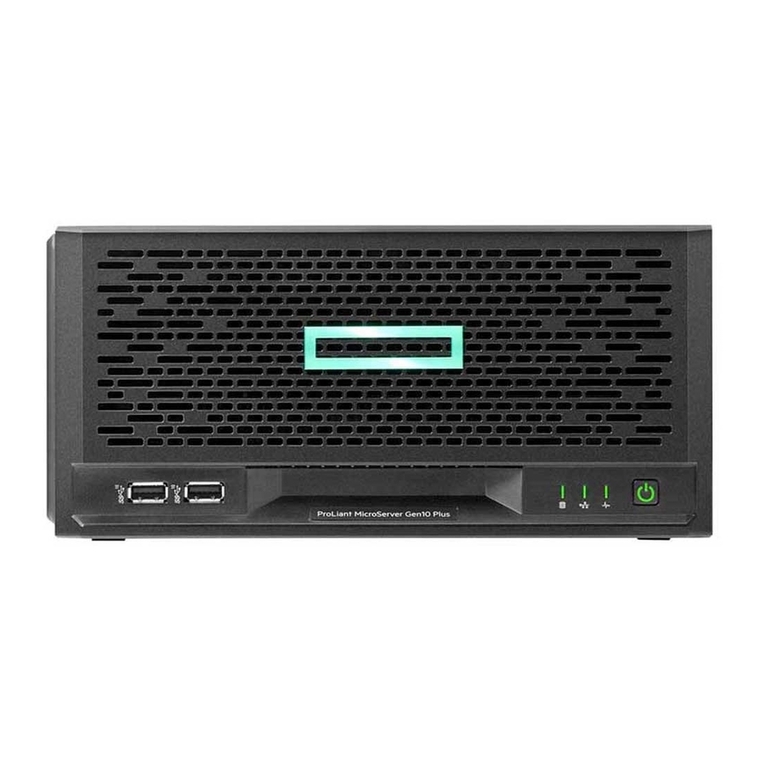
HPE
HPE ProLiant MicroServer Gen10 Plus Product End-of-Life Disassembly Instructions
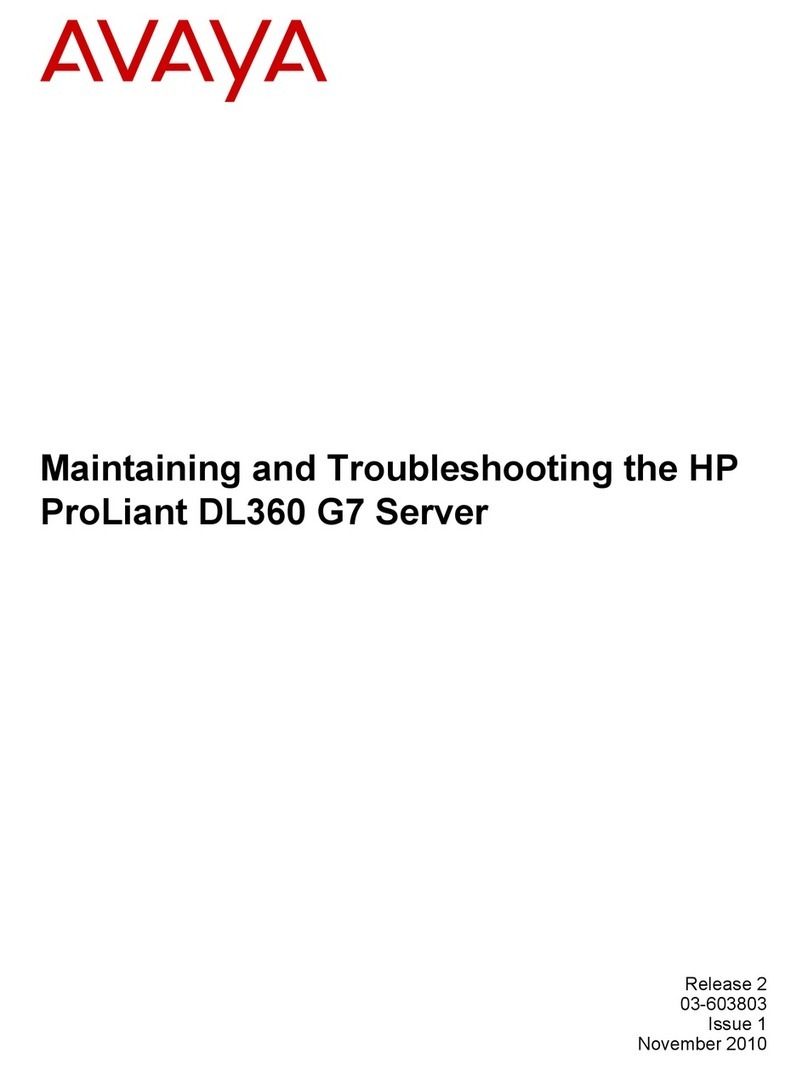
HP
HP HP DL360 G7 Maintaining and troubleshooting

Renaissance Learning
Renaissance Learning NEO 2 quick start guide

